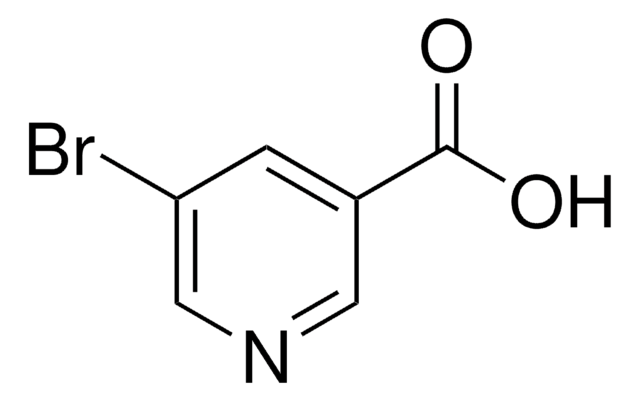推荐产品
描述
Carbon: 28.5%-30.1%
Nitrogen: 12.5% - 13.2%
品質等級
化驗
>98%
形狀
powder
SMILES 字串
N1(C2=NC=CC=C2)N=CC=C1.C3(N4C=CC=N4)=CC=CC=N3.C5(N6C=CC=N6)=CC=CC=N5.C
InChI 密鑰
KQAJWGNTMDECEN-UHFFFAOYSA-N
相关类别
一般說明
FK 102 Co(III) PF6 salt (FK 102) is a cobalt based p type dopant that is used in chemical doping of triarylamine based hole conductors. It can be used in the fabrication of dye sensitized solar cells (DSSCs). It has a redox potential of 1.06 V and shows no absorption in the visible region.
應用
Use this cobalt complexes to increase photovoltages of liquid electrolyte cells substantially or to achieve ultrahigh performance with solid state photovoltaic devices.
FK102 cobalt complexes offer guaranteed performance, high reproducibility, consistent results and are of highest purity. In comparison to triiodide-based redox electrolytes, cobalt complexes in general increase photovoltages and particularly at lower light levels (e.g. for indoor applications), significantly increase device power output.
Recommended use:
In liquid-based electrolytes: typically 0.15-0.2 M of Co(II) and ca. 0.05 M Co(II)
In solid-state photovoltaic cells: up to 10 weight % added to the hole transport material system.
FK102 cobalt complexes offer guaranteed performance, high reproducibility, consistent results and are of highest purity. In comparison to triiodide-based redox electrolytes, cobalt complexes in general increase photovoltages and particularly at lower light levels (e.g. for indoor applications), significantly increase device power output.
Recommended use:
In liquid-based electrolytes: typically 0.15-0.2 M of Co(II) and ca. 0.05 M Co(II)
In solid-state photovoltaic cells: up to 10 weight % added to the hole transport material system.
法律資訊
Product of Greatcell Solar®
Greatcell Solar is a registered trademark of Greatcell Solar
訊號詞
Warning
危險分類
Eye Irrit. 2 - Skin Irrit. 2 - Skin Sens. 1 - STOT SE 3
標靶器官
Respiratory system
儲存類別代碼
11 - Combustible Solids
水污染物質分類(WGK)
WGK 3
閃點(°F)
Not applicable
閃點(°C)
Not applicable
Tris (2-(1 H-pyrazol-1-yl) pyridine) cobalt (III) as p-type dopant for organic semiconductors and its application in highly efficient solid-state dye-sensitized solar cells
Burschka J, et al.
Journal of the American Chemical Society, 133(45), 18042-18045 (2011)
Teck Ming Koh et al.
ChemSusChem, 7(7), 1909-1914 (2014-05-23)
In this work, we report a new cobalt(III) complex, tris[2-(1H-pyrazol-1-yl)pyrimidine]cobalt(III) tris[bis(trifluoromethylsulfonyl)imide] (MY11), with deep redox potential (1.27 V vs NHE) as dopant for 2,2',7,7'-tetrakis-(N,N-di-p-methoxyphenylamine)-9,9'-spirobifluorene (spiro-OMeTAD). This dopant possesses, to the best of our knowledge, the deepest redox potential among all
Edoardo Mosconi et al.
Journal of the American Chemical Society, 134(47), 19438-19453 (2012-11-02)
We report a combined experimental and computational investigation to understand the nature of the interactions between cobalt redox mediators and TiO(2) surfaces sensitized by ruthenium and organic dyes, and their impact on the performance of the corresponding dye-sensitized solar cells
Julian Burschka et al.
Nature, 499(7458), 316-319 (2013-07-12)
Following pioneering work, solution-processable organic-inorganic hybrid perovskites-such as CH3NH3PbX3 (X = Cl, Br, I)-have attracted attention as light-harvesting materials for mesoscopic solar cells. So far, the perovskite pigment has been deposited in a single step onto mesoporous metal oxide films
商品
Next generation solar cells have the potential to achieve conversion efficiencies beyond the Shockley-Queisser (S-Q) limit while also significantly lowering production costs.
For several decades, the need for an environmentally sustainable and commercially viable source of energy has driven extensive research aimed at achieving high efficiency power generation systems that can be manufactured at low cost.
Global Trade Item Number
| 货号 | GTIN |
|---|---|
| 805254-5G | 4061832979946 |
我们的科学家团队拥有各种研究领域经验,包括生命科学、材料科学、化学合成、色谱、分析及许多其他领域.
联系客户支持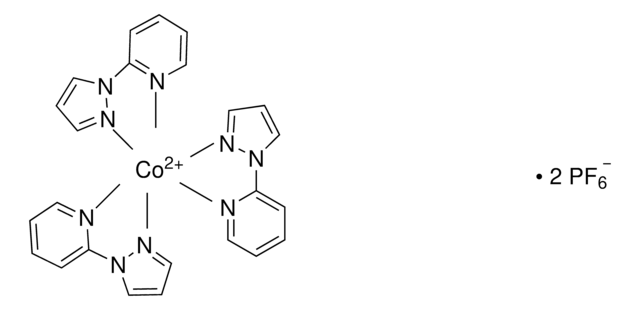
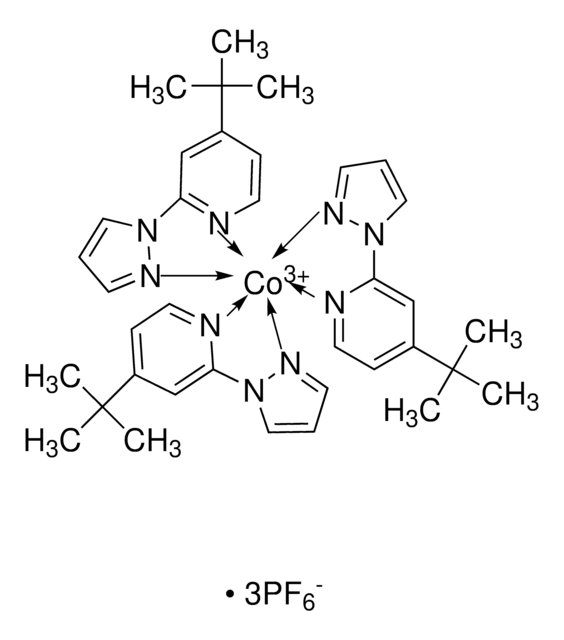
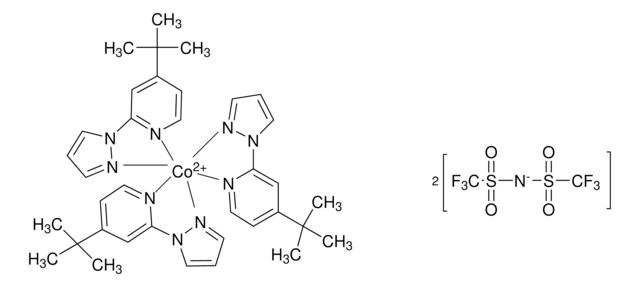
![[(TEEDA)Ni(o-tolyl)Cl] ≥95%](/deepweb/assets/sigmaaldrich/product/structures/156/227/a6ce708d-c671-4ca6-98ba-ef780504ca58/640/a6ce708d-c671-4ca6-98ba-ef780504ca58.png)
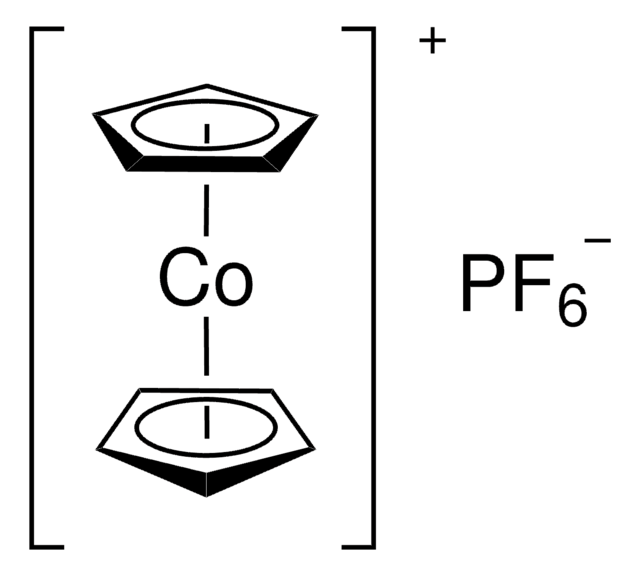

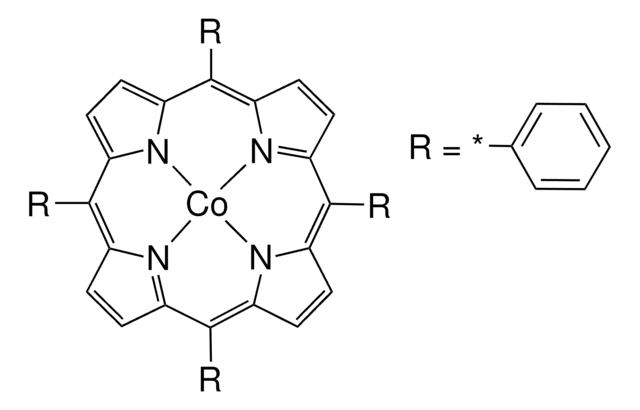
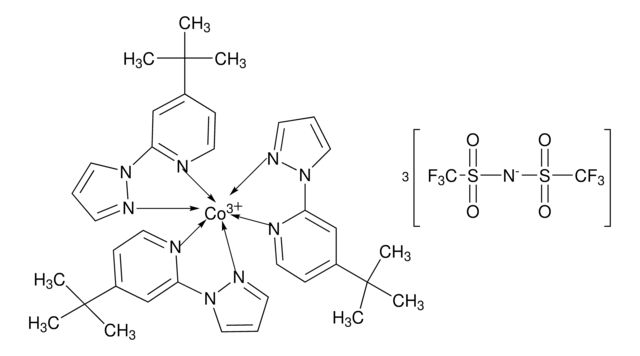
![[Pd(terpy)(MeCN)][BF4]2 ≥95%](/deepweb/assets/sigmaaldrich/product/structures/221/681/ebdc06b7-3b8d-48d4-8aae-08a856260f39/640/ebdc06b7-3b8d-48d4-8aae-08a856260f39.png)
